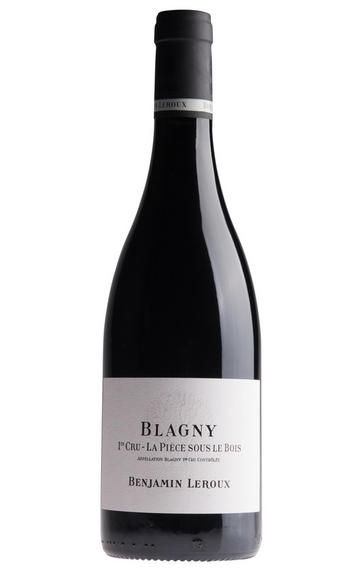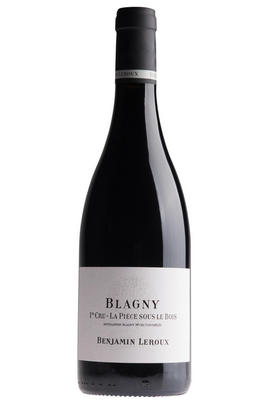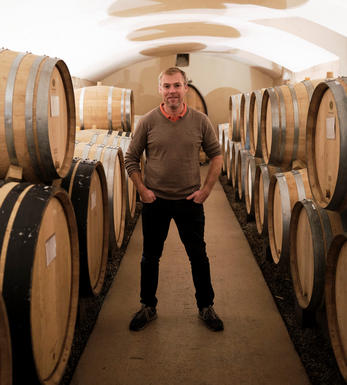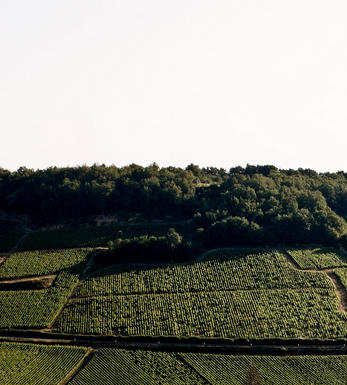
2021 Blagny, La Pièce Sous le Bois, 1er Cru, Benjamin Leroux, Burgundy

Critics reviews
Drink 2025-2031
Jasper Morris, Inside Burgundy (January 2023)
About this WINE

Benjamin Leroux
Having created a name for himself as régisseur (general manager) of Domaine du Comte Armand in Pommard, Benjamin Leroux established, with English backing, a small négociant business based in Beaune since 2007. The range is confined to the Côte d’Or, from Chassagne-Montrachet to Gevrey-Chambertin, with the intention of developing farming contracts or indeed purchasing vineyards in the future.
The possibilities are very exciting for this exceptionally talented vigneron. Benjamin is a master at delivering purity of fruit alongside a seamless texture in his wines which have only the subtlest influence of oak. One of Benjamin’s favourite locations for white wine vineyards is the border between Auxey-Duresses and Meursault, which is where Les Vireuils can be found. Here the natural weight of Meursault is enhanced by the fresher minerality typical of the side valley of Auxey-Duresses.
Jasper Morris MW, Burgundy Wine Director and author of the award-winning Inside Burgundy comprehensive handbook.
Discover the story behind our Own Selection Bourgogne Côte d’Or Pinot Noir, made for us by Benjamin. Read more

Puligny-Montrachet
Puligny was one of two villages (along with Chassagne) which gained permission in 1879 to hyphenate the name of its most famous vineyard, Montrachet, to its own.
The reputation of Puligny-Montrachet is based around its four Grands Crus. Montrachet labels often boast a noble, triumphant 'Le' in front of its name, lest you dare confuse it with any lesser wine. It has much to be proud of, with many considering Montrachet to be the greatest white wine in the world. At its best it has an intensity, complexity and elegance that make you wonder how such a wine could be made from mere grapes.
The luxurious and explosive Chevalier-Montrachet is not quite as deep, although it is probably the next best. Only marginally less impressive, and rather more consistent than Montrachet is the richly textured Bâtard-Montrachet (also shared with Chassagne). Bienvenues-Bâtard-Montrachet is equally good, with the focus on honeyed finesse and exquisite balance rather than richness.
These legendary wines are supported by a host of fabulous Premier Cru vineyards capable of reaching Grand Cru quality. Brimming with flavour and intensity, Le Cailleret and Les Pucelles (which both lie across the road from Le Montrachet) are prime candidates, along with Les Demoiselles, Les Combettes and Folatières.
Sandwiched between the larger Chassagne and Meursault, Puligny produces wines that are more striking than any in the Côte d’Or, portraying a floral elegance alongside a stylish, steely concentration. They are very different to Meursault: more refined and delicate, and less rich.
Village level Puligny-Montrachet from top growers can be very good indeed, but is all too often unexciting and disappointing. Grands Crus normally need at least eight years before they can be broached, and last for 20 or more. Premiers Crus should generally be enjoyed between five and 15 years of age; village wines from three to 10 years.
In theory, you can find red Puligny-Montrachet, but it scarcely exists anymore, and is rarely worth the price tag.

Pinot Noir
Pinot Noir is probably the most frustrating, and at times infuriating, wine grape in the world. However when it is successful, it can produce some of the most sublime wines known to man. This thin-skinned grape which grows in small, tight bunches performs well on well-drained, deepish limestone based subsoils as are found on Burgundy's Côte d'Or.
Pinot Noir is more susceptible than other varieties to over cropping - concentration and varietal character disappear rapidly if yields are excessive and yields as little as 25hl/ha are the norm for some climats of the Côte d`Or.
Because of the thinness of the skins, Pinot Noir wines are lighter in colour, body and tannins. However the best wines have grip, complexity and an intensity of fruit seldom found in wine from other grapes. Young Pinot Noir can smell almost sweet, redolent with freshly crushed raspberries, cherries and redcurrants. When mature, the best wines develop a sensuous, silky mouth feel with the fruit flavours deepening and gamey "sous-bois" nuances emerging.
The best examples are still found in Burgundy, although Pinot Noir`s key role in Champagne should not be forgotten. It is grown throughout the world with notable success in the Carneros and Russian River Valley districts of California, and the Martinborough and Central Otago regions of New Zealand.


Buying options
Add to wishlist
Description
The La Pièce Sous le Bois Blagny is from the same vineyard as Benjamin Leroux’s Meursault. Blagny is now almost unknown when speaking about Burgundy, and just 5.2 hectares of Pinot Noir are still planted here. Yields were fair in 2021, reaching 35hl/ha, and Benjamin was able to use 10% whole bunches in his winemaking. The wine’s trademark dark fruit character and smoky intensity are still there, and the wine has a good mid-palate weight. Drink 2025 – 2035.
wine at a glance
Delivery and quality guarantee